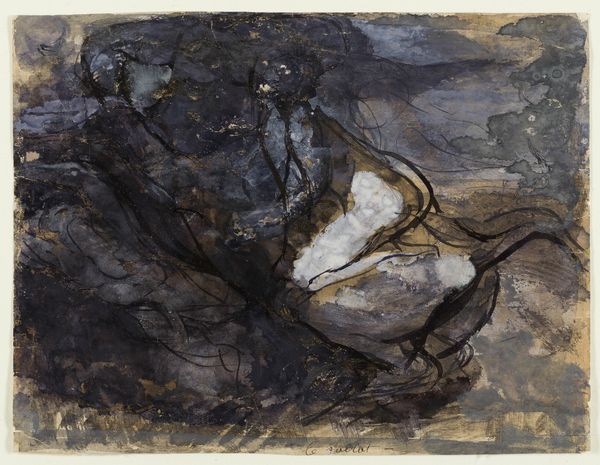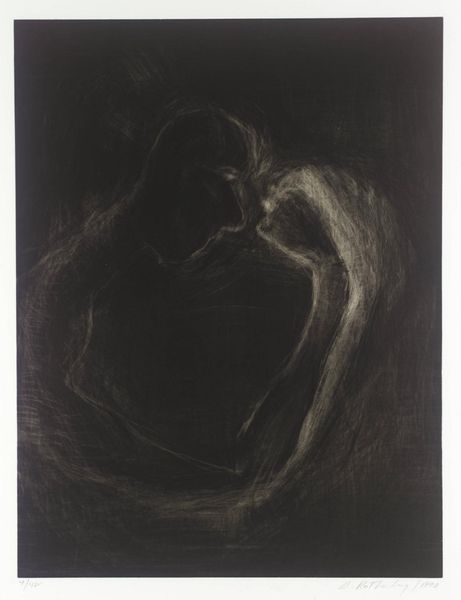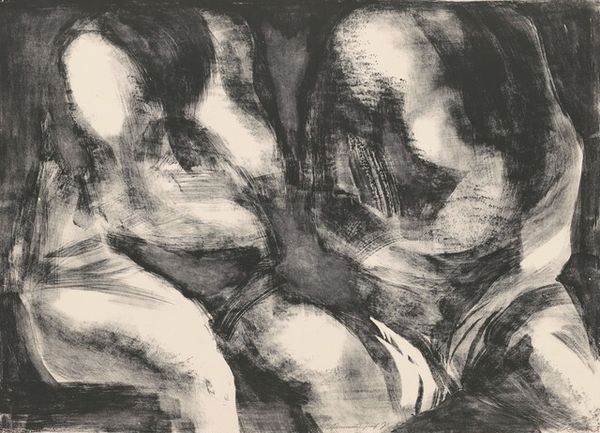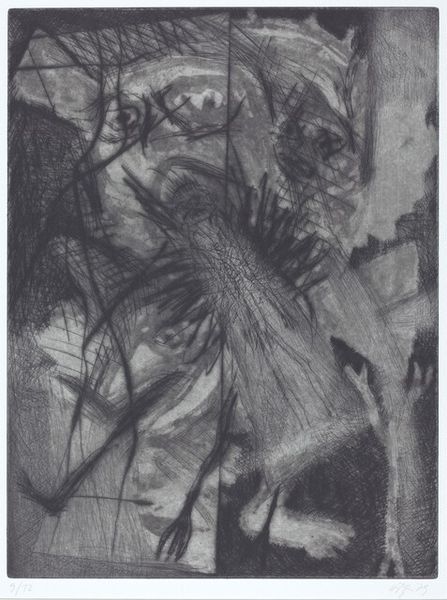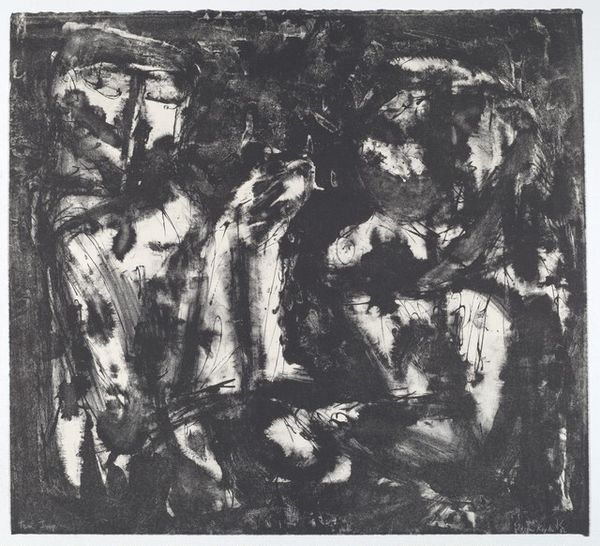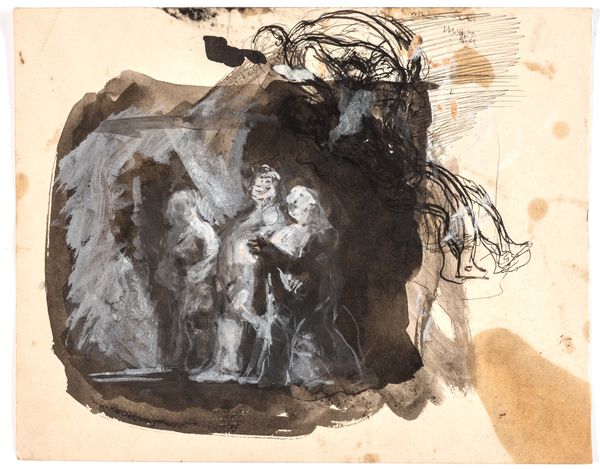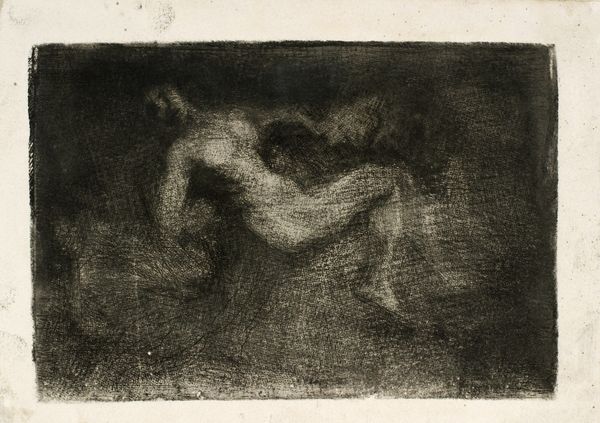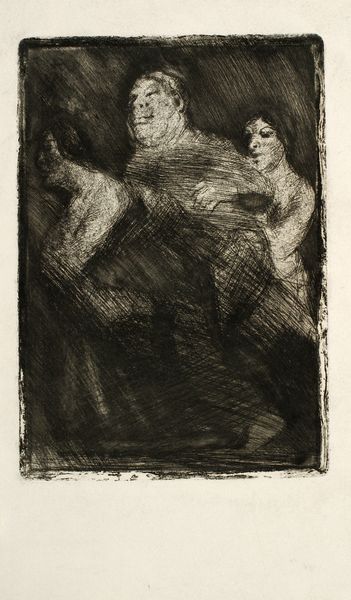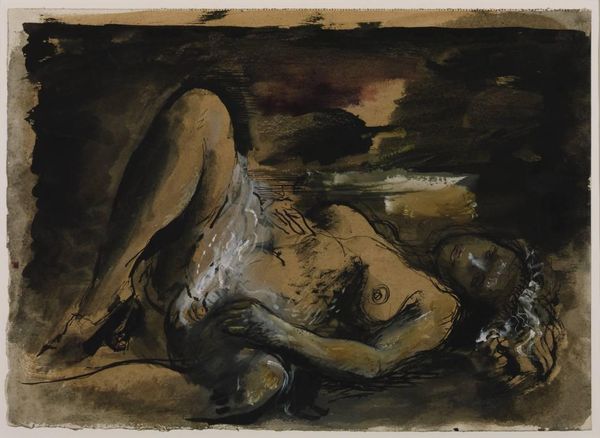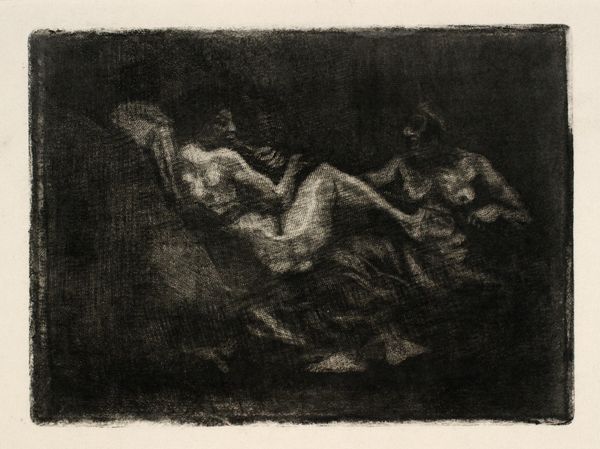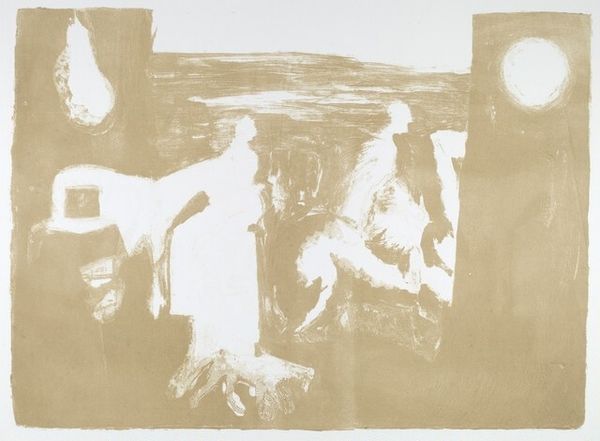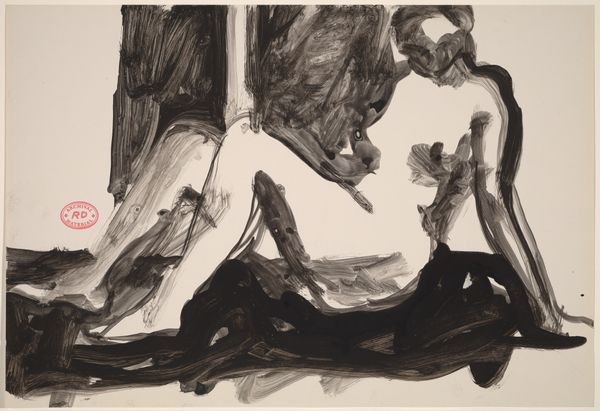
drawing, watercolor
#
drawing
#
landscape
#
figuration
#
oil painting
#
watercolor
#
intimism
#
symbolism
#
watercolour illustration
#
watercolor
Dimensions: 199 mm (height) x 252 mm (width) (bladmaal)
Curator: What strikes me immediately is the palpable gloom; it’s really a somber scene isn’t it? Editor: It absolutely is. We’re looking at Oluf Hartmann's 1909 work, "Charon's Boat: Psyche conveyed across the river Styx," housed here at the SMK. Hartmann renders the scene in watercolor, and I believe the choice of medium deeply affects the narrative. Curator: How so? It definitely adds to the overall hazy and melancholic tone with how it softens the edges and blends the forms, but I'm wondering if there's more. Editor: Yes, precisely. Water, in both a literal and symbolic sense, plays a key role here. Water is not only the physical means by which Psyche journeys into the afterlife, but the immaterial river, created with watercolor, can symbolize purification, transformation, and even memory. Curator: So the blurring allows the artist to represent a sort of in-between state of consciousness? That makes sense with the figure of Psyche being on this liminal journey. We see her in gauzy whites and grays, but even in that ethereal rendering, she seems a figure of peace. In this mythological scene, it feels so focused and intimate, like it’s just these two figures existing within a whole world. Editor: Exactly! While we see a vulnerable Psyche in transit, the very physical labor is represented by the imposing figure of Charon. Note how Hartmann obscures the surroundings, placing sole emphasis on their intertwined destinies and shared humanity rather than a grandiose mythological story. He creates an almost democratic depiction of death here. Curator: Indeed. In Western art history, it is common to encounter the river Styx in detailed and dramatic portrayals. Hartmann rejects such grandiosity and zeroes in on these characters at their most vulnerable moment. It really invites reflection. Editor: I agree. Hartmann is pulling back the curtain. By focusing on intimacy and emotion, he gives us an intersectional look at death—the moment when all people share a similar state regardless of earthly distinctions. What remains is the psychological drama between a soul's passage and its weary guide. Curator: Ultimately it becomes about empathy, seeing their connection. That's a very powerful message conveyed through very soft means. It’s really quite moving. Editor: Precisely. It's an example of how artistic interpretation can shape our understanding and invite compassion across the boundaries of life, death, and ancient mythology.
Comments
No comments
Be the first to comment and join the conversation on the ultimate creative platform.
